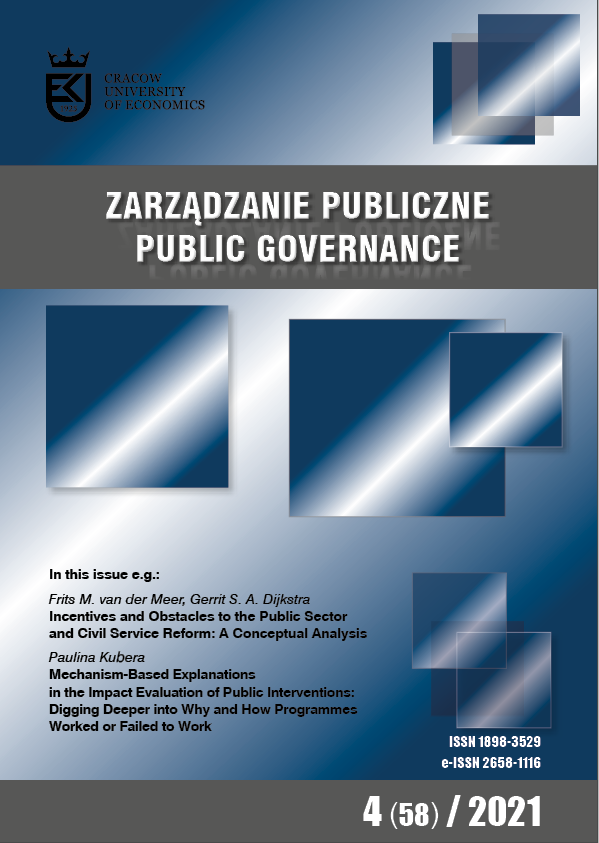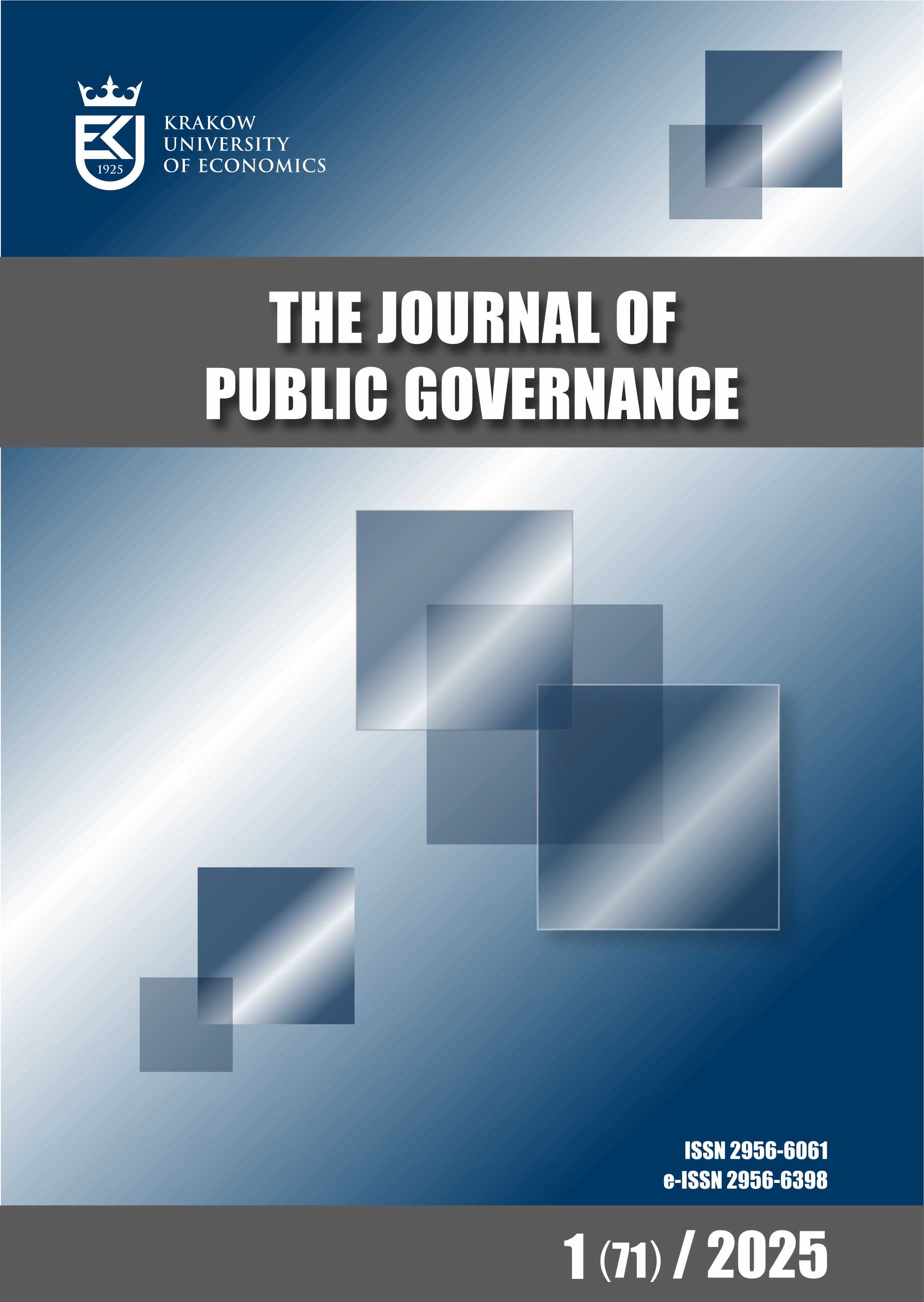Sleep Disorders as a Safety Issue in Transport and Communication Largely Not Appraised by National Health Policies
DOI:
https://doi.org/10.15678/ZP.2021.58.4.04Keywords:
health policy, sleep disorders, drowsy driving, road safety, economic consequences of road traffic accidentsAbstract
Objectives:
The objective of this article is to present the issue of sleepiness, sleep disorders, and their impact on traffic safety in Poland. The paper reviews published studies and data concerning the causes of driver fatigue and the scale of the sleep-related road accident problem.
Research Design & Methods:
This paper uses an extensive analysis and study of literature, classification, and scientific description.
Findings:
Road traffic accidents represent a huge public health concern, which needs to be tackled by a multi-disciplinary approach. Related deaths and disabilities have social and financial consequences, and are a real public health challenge. Sleep disorders have a tangible and empirically-proven effect on road safety. Effective identification, organised response, and therapy of this type of disorders should be implemented.
Implications/Recommendations:
The realisation of healthcare needs and services provided by the state can only be obtained under conditions of properly organised and operationally-effective economic, political, and social systems. A proper understanding of mechanisms and factors responsible for hazardous road behaviour may be of practical use for many actors involved, including public services, the healthcare sector, road safety services, road and vehicle engineers, and the financial sector, primarily insurance companies.
Contribution/Value Added:
As a result of the analysis, the synthesis of the theoretical findings on the road safety was presented. The certain consequences for national health policies were mentioned. This paper may serve as a basis for establishing subsequent empirical studies.
Downloads
References
American Academy of Sleep Medicine (2008). Sleep Deprivation. Available at: https://aasm.org/resources/factsheets/sleepdeprivation.pdf (accessed: 07.03.2022).
Avidan, A. Y., & Neubauer, D. N. (2017). Chronic Insomnia Disorder. Continuum Lifelong Learning in Neurology, 23(4), 1064–1092.
Barnes, C. M., Wagner, D. T., & Ghumman, S. (2012). Borrowing from Sleep to Pay Work and Family: Expanding Time‐Based Conflict to the Broader Nonwork Domain. Personnel Psychology, 65(4), 789–819.
Biernacki, M. (2017). Modele teoretyczne wyjaśniające zachowanie kierowców na drodze. Medycyna pracy, 3, 401–411.
Chung, F., Yegneswaran, B., Liao, P., Chung, S. A., Vairavanathan, S., Islam, S., Khajehdehi, A., & Shapiro, C. M. (2008). STOP questionnaire: A tool to screen patients for obstructive sleep apnea. Anesthesiology, 108(5), 812–821.
European Commission (2018). Fatigue. Directorate General for Transport. Available at: https://roadsafety.transport.ec.europa.eu/system/files/2021-07/ersosynthesis2018-fatigue-summary.pdf (accessed: 07.05.2022).
García-Altés, A., & Pérez, C. (2007). The economic cost of road traffic crashes in an urban setting. Injury Prevention, 13, 65–68.
George, C. F. (2004). Sleep. 5: Driving and automobile crashes in patients with obstructive sleep apnoea/hypopnoea syndrome. Thorax, 59(9), 804–807.
Gopalakrishnan, S. (2012). A public health perspective of road traffic accidents. Journal of Family Medicine and Primary Care, 1(2), 144–150.
Higgins, J. S., Michael, J., Austin, R., Åkerstedt, T., van Dongen, H. P. A., Watson, N., Czeisler, C., Pack, A. I., & Rosekind, M. R. (2017). Asleep at the wheel: The road to addressing drowsy driving. Sleep, 40(2). https://doi.org/10.1093/sleep/zsx001
Hirshkowitz, M., Whiton, K., Albert, S. M., Alessi, C., Bruni, O., DonCarlos, L., Hazen, N., Herman, J., Katz, E. S., Kheirandish-Gozal, L., Neubauer, D. N., O’Donnell, A. E., Ohayon, M., Peever, J., Rawding, R., Sachdeva, R. C., Setters, B., Vitiello, M. V., Ware, J. C., & Adams Hillard, P. J. (2015). National Sleep Foundation’s sleep time duration recommendations: Methodology and results summary. Sleep Health, 1(1), 40–43.
Jamroż, J., & Smolarek, L. (2012). Analiza wpływu zmęczenia kierowców na ryzyko wypadków na drogach krajowych. Drogownictwo, 4, 121–126.
Johns, M. (1997). https://epworthsleepinessscale.com/about-the-ess/.
Kiciński, P., Zakrzewski, M., Dybała, A., Zubilewicz, R., Mosiewicz, J., & Jaroszyński, A. (2012). Obturacyjny bezdech senny – zasady diagnostyki i leczenia. Forum Medycyny Rodzinnej, 6(5), 228–235.
Komada, Y., Asaoka, S., Abe, T., & Inoue, Y. (2013). Short sleep duration, sleep disorders, and traffic accidents. IATSS Research, 37, 1–7.
Komenda Główna Policji, Biuro Ruchu Drogowego (2020). Wypadki drogowe w Polsce w 2019 roku.
Komendant Główny Policji (2015). Zarządzenie Nr 31 Komendanta Głównego Policji z dnia 22 października 2015 r. w sprawie metod i form prowadzenia przez Policję statystyki zdarzeń drogowych.
Krajowa Rada Bezpieczeństwa Ruchu Drogowego (2019). Wycena kosztów wypadków i kolizji drogowych na sieci dróg w Polsce na koniec roku 2018, z wyodrębnieniem średnich kosztów społeczno-ekonomicznych wypadków na transeuropejskiej sieci transportowej.
Lyznicki, J. M., Doege, T. C., Davis, R. M., & Williams, M. A. (1998). Sleepiness, driving, and motor vehicle crashes. Journal of the American Medical Association, 279(23), 1908–1913.
Maycock, G. (1996). Sleepiness and driving: The experience of UK car drivers. Journal of Sleep Research, 5, 229–237.
McNicholas W.T., & Rodenstein D. (2015). Sleep apnoea and driving risk: The need for regulation. European Respiratory Review, 24, 602–606.
Morsy, N. E., Farrag, N. S., Zaki, N. F. W., Badawy, A. Y., Abdelhafez, S. A., El-Gilany, A. H., El Shafey, M. M., Pandi-Perumal, S. R., Spence, D. W., & Bahammam, A. S. (2019). Obstructive sleep apnea: Personal, societal, public health, and legal implications. Reviews on Environmental Health, 34, 153–169.
Powell, N. B., Schechtman, K. B., Riley, R. W., Guilleminault, C., Chiang, R. P. Y., & Weaver, E. M. (2007). Sleepy driver near-misses may predict accident risks. Sleep, 30(3), 331–342.
Report of the Obstructive Sleep Apnoea Working Group (2013). New Standards and Guidelines for Drivers with Obstructive Sleep Apnoea syndrome.
Sateia, M. J. (2014), International classification of sleep disorders-third edition: Highlights and modifications. Chest, 146(5), 1387–1394.
Sateia, M. J., & Nowell, P. D. (2004). Insomnia. Lancet, 364(9449), 1959–1973.
Sateia, M. J., Buysse, D. J., Krystal, A. D., Neubauer, D. N., & Heald, J. L. (2017). Clinical Practice Guideline for the Pharmacologic Treatment of Chronic Insomnia in Adults: An American Aca demy of Sleep Medicine Clinical Practice Guideline. Journal of Clinical Sleep Medicine, 13(2), 307–349.
Semelka, M., Wilson, J., & Floyd, R. (2016). Diagnosis and Treatment of Obstructive Sleep Apnea in Adults. American Family Physician, 94(5), 355–360.
Spicuzza, L., Caruso, D., & Di Maria, G. (2015). Obstructive sleep apnoea syndrome and its management. Therapeutic Advances in Chronic Disease, 6(5), 273–285.
Szelenberg, W. (2003). Standardy leczenia bezsenności Polskiego Towarzystwa Badań nad Snem. Farmakoterapia w Psychiatrii i Neurologii, 1, 5–16.
Taźbirek, M., Pierzchała, W., Ograbek-Król, M., Skoczyński, S., & Barczyk, A. (2016). Zaburzenia oddychania podczas snu. Śląski Uniwersytet Medyczny w Katowicach.
Tefft, B. C. (2012). Prevalence of motor vehicle crashes involving drowsy drivers, United States, 1999–2008. Accident Analysis & Prevention, 45, 180–186.
Watson, N. F., Badr, M. S., Belenky, G., Bliwise, D. L., Buxton, O. M., Buysse, D., Dinges, D. F., Gangwisch, J., Grandner, M. A., Kushida, C., Malhotra, R. K., Martin, J. L., Patel, S. R., Quan, S. F., & Tasali, E. (2015). Recommended Amount of Sleep for a Healthy Adult: A Joint Consensus Statement of the American Academy of Sleep Medicine and Sleep Research Society. Sleep, 38(6), 843–844.
Wichniak, A., & Poradowska, E. (2017). Zdrowy sen. Medycyna praktyczna – psychiatria, 3, 20–26.
Wichniak, A., Jankowski, K. S., Skalski, M., Skwarło‐Sońta, K., Zawilska, J. B., Żarowski, M., Poradowska, E., & Jernajczyk, W. (2017a). Treatment guidelines for Circadian Rhythm Sleep-Wake Disorders of the Polish Sleep Research Society and the Section of Biological Psychiatry of the Polish Psychiatric Association. Part I. Physiology, assessment and therapeutic methods. Psychiatria polska, 51(5), 793–814.
Wichniak, A., Jankowski, K. S., Skalski, M., Skwarło‐Sońta, K., Zawilska, J. B., Żarowski, M., Poradowska, E., & Jernajczyk, W. (2017b). Treatment guidelines for Circadian Rhythm Sleep-Wake Disorders of the Polish Sleep Research Society and the Section of Biological Psychiatry of the Polish Psychiatric Association. Part II. Diagnosis and treatment. Psychiatria polska, 51(5), 815–832.
Pływaczewski, R., Brzecka, A., Bielicki, P., Czajkowska-Malinowska, M., Cofta, S., Jonczak, L., Radliński, J., Tażbirek, M., & Wasilewska, J. (2013). Zalecenia Polskiego Towarzystwa Chorób Płuc dotyczące rozpoznawania i leczenia zaburzeń oddychania w czasie snu (ZOCS) u dorosłych. Pneumonologia i Alergologia Polska, 81(3), 221–258.



